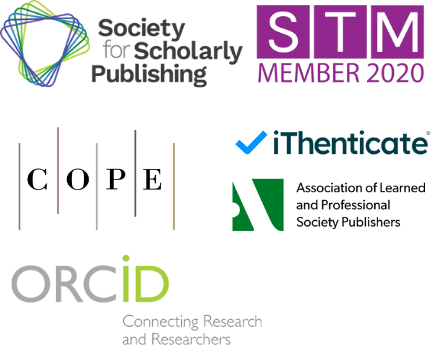Metal-Catalyzed Reactions for Energy and Biomedical Applications
DOI:
https://doi.org/10.71222/akkwke66Keywords:
metal catalysis, energy conversion, electrocatalysis, biomedical applications, single-atom catalysts, coordination polymersAbstract
Metal-catalyzed reactions have emerged as cornerstone technologies bridging energy conversion systems and biomedical therapeutics through their remarkable selectivity, efficiency, and tunability. This review examines the dual convergence of metal catalysis in addressing critical challenges in sustainable energy production and advanced healthcare delivery. The discussion encompasses single-atom catalysts, dual-metal site architectures, and coordination polymer frameworks that enable transformative processes including electrocatalytic carbon dioxide reduction, fuel cell oxygen reduction, hydrogen evolution, and targeted therapeutic interventions. Recent advances in biohybrid catalysis and metal-organic frameworks have demonstrated unprecedented control over reaction pathways and biological interactions, creating opportunities for integrated solutions to energy sustainability and human health challenges. Through analysis of catalyst design principles, mechanistic understanding, and structure-activity relationships, this work illustrates how strategic manipulation of metal centers, ligand environments, and support materials drives performance optimization across both domains. The synthesis of knowledge from energy catalysis and catalytic biomedicine reveals common design strategies and emerging opportunities for cross-disciplinary innovation that will shape future development of multifunctional metal-based systems capable of addressing interconnected global challenges in climate, energy security, and healthcare accessibility.
References
1. X. Li, Y. Zhang, A. He, Q. Li, S. Wang, and J. Shan et al., “Biohybrid catalysis in biomedicine,” Coordination Chemistry Reviews, vol. 545, p. 217003, 2025, doi: 10.1016/j.ccr.2025.217003.
2. H. Xiang, W. Feng, and Y. Chen, “Single‐Atom Catalysts in Catalytic Biomedicine,” Advanced Materials, vol. 32, no. 8, p. 1905994, 2020, doi: 10.1002/adma.201905994.
3. Z. Xia and Z. Xiang, “Editorial: Catalysts for Clean Energy Conversion and Storage,” Frontiers in Materials, vol. 7, p.43, 2020, doi: 10.3389/fmats.2020.00043.
4. G. Yasin, M. Tabish, S. Ajmal, Q. Zhuo, M. A. Mushtaq, and A. Saad et al., “Single atom horizons for shaping the future of catalysis and sustainability: the next frontiers in energy conversion and storage,” Progress in Materials Science, vol. 155, p. 101525, 2025, doi: 10.1016/j.pmatsci.2025.101525.
5. F. Ding, N. Su, C. Ma, B. Li, W.-L. Duan, and J. Luan, “Fabrication of two novel two-dimensional copper-based coordination polymers regulated by the ‘V’-shaped second auxiliary ligands as high-efficiency urease inhibitors,” Inorganic Chemistry Communications, vol. 170, p. 113319, 2024, doi: 10.1016/j.inoche.2024.113319.
6. X. Yang, L. Yan, X. Kong, S. Liu, and X. Zhao, “Metal‐Organic‐Framework‐Based Single‐Atomic Catalysts for Energy Conversion and Storage: Principles, Advances, and Theoretical Understandings,” Advanced Sustainable Systems, vol. 6, no. 1, p. 2100281, 2022, doi: 10.1002/adsu.202100281.
7. F. Ding, C. Ma, W.-L. Duan, and J. Luan, “Second auxiliary ligand induced two coppor-based coordination polymers and urease inhibition activity,” Journal of Solid State Chemistry, vol. 331, p. 124537, 2024, doi: 10.1016/j.jssc.2023.124537.
8. Virginija Kepenienė and L. Tamašauskaitė-Tamašiūnaitė, “Advanced Catalytic Materials for Renewable Energy Sources,” Catalysts, vol. 14, no. 8, p. 497, 2024, doi: 10.3390/catal14080497.
9. Y. Ni, J. Tian, Z. Han, Y. Chai, and C. Zhao et al., “Catalysis in Sustainable Energy Resources: Overview Studies of Hydrogen, Methane, Biomass and Plastics,” Industrial Chemistry and Materials, 2025, doi: 10.1039/d4im00106k.
10. G. Xie, W. Guo, Z. Fang, Z. Duan, X. Lang, and D. Liu et al., “Dual‐metal sites drive tandem electrocatalytic CO2 to C2+ products,” Angewandte Chemie, vol. 136, no. 47, p. e202412568, 2024, doi: 10.1002/ange.202412568.
11. M. Li, X. Bi, R. Wang, Y. Li, G. Jiang, and L. Li et al., “Relating Catalysis between Fuel Cell and Metal-Air Batteries,” Matter, vol. 2, no. 1, pp. 32–49, 2020, doi: 10.1016/j.matt.2019.10.007.
12. Z. Kong, J. Wu, Z. Liu, D. Yan, Z. Wu, and C. Zhong, “Advanced electrocatalysts for fuel cells: Evolution of active sites and synergistic properties of catalysts and carrier materials,” Exploration, vol. 5, no. 1, p. 20230052, 2025, doi: 10.1002/exp.20230052.
13. N. P. Bigham and J. J. Wilson, “Metal Coordination Complexes as Therapeutic Agents for Ischemia-Reperfusion Injury,” Journal of the American Chemical Society, vol. 145, no. 17, pp. 9389–9409, 2023, doi: 10.1021/jacs.3c01984.
14. M. Guo, K. Liu, K. Wang, J. Liu, P. Wang, F. Zhao, X. Zhang, and L. Zhang, “Sacrificial doping of interstitial lithium facilitated undoped amorphous/crystalline RuO₂ toward boosted acidic water oxidation,” Advanced Energy Materials, Art. no. e03199, 2025, doi: 10.1002/aenm.202503199.
Downloads
Published
Issue
Section
License
Copyright (c) 2025 Jessica Lin, Michae Chen (Author)

This work is licensed under a Creative Commons Attribution 4.0 International License.


